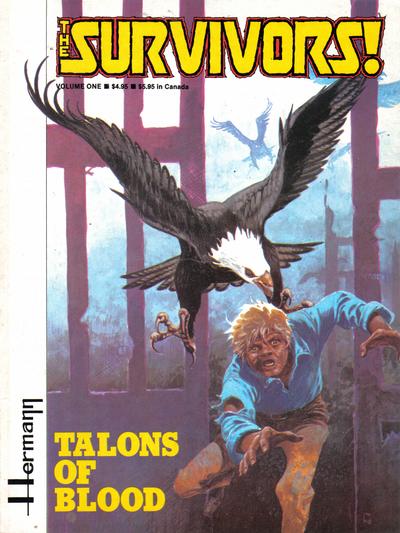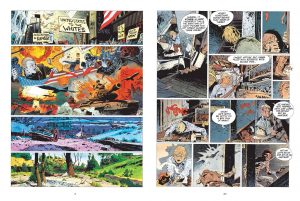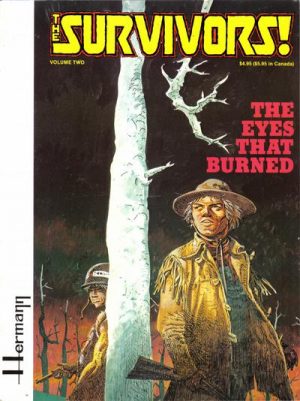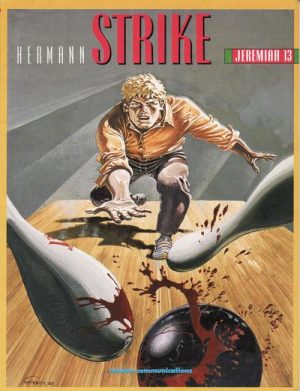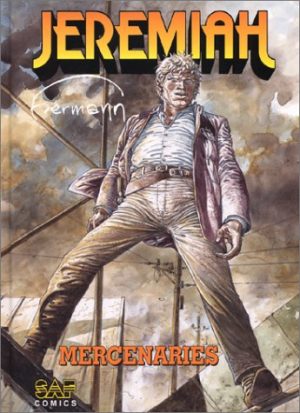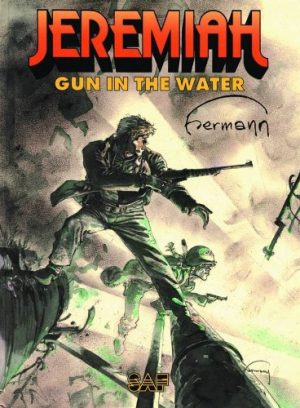Review by Frank Plowright
In European editions Jeremiah is a much loved post-apocalyptic saga that’s picked up numerous awards for creator Hermann (Huppen). It’s run to 38 volumes since 1979, and even spawned a brief English language TV show (2002-2004) with J. Michael Straczynski’s involvement, yet following the series in English has been an impossible task. Several publishers have tried, yet the English readership just won’t bite, and it’s difficult to work out why because it’s not as if quality or imagination is an issue.
The first English presentation came from Fantagraphics, who changed the title to The Survivors for Talons of Blood and The Eyes That Burned, issuing the first and fourth albums in 1982 and 1983. In his introduction Kim Thompson highlights the difference between European and American storytelling methods, which is emphatically brought home with a stunning first page. Hermann is obviously not interested in the creation of his world, but realises the necessity of establishing it, achieved over four beautifully drawn shorthand panels supplied as the left sample art.
Over the early volumes Jeremiah has much in common with the Western, never more than in this opening shot. Humanity’s survivors and their offspring have generated a pre-industrialised society, but with some leftovers and newer inventions that become more prominent as the series continues. Talons of Blood, though, is a straightforward Western in the Clint Eastwood style with its themes of revenge and retribution against a seemingly unstoppable malign force. The major difference is Jeremiah’s relative youth, and for all his talent he needs the cynical guiding hand of Kurdy Malloy to ensure he learns the patience not to follow his first instinct and rush in, all guns blazing.
Before building his own worlds, Hermann had been the artist on the long-running French Comanche series, so was well versed in rich Western landscapes and locations, and once Jeremiah reaches town there’s the full complement of beautifully realised scurvy characters and shady dives. Hermann even arranges a nod to Eastwood via a villain involved in a shootout sequence. However, the way that turns out shows why Hermann adds something new to the genre stylings, as does an extraordinarily camp villain more motivated by concern for the caged eagles he keeps than for the people in his town. The plot eventually becomes an assault on an impregnable fortress, and due to naivety Jeremiah is far more the victim than in later volumes, Hermann again playing with archetypes. In how many Westerns do we root for a youngster inevitably named ‘The Kid’? In this retitled incarnation there’s actually greater tension for not knowing the entire series is named after Jeremiah.
Hermann follows the Chekov’s Gun rule of plotting, so we know there’s going to be a purpose to a cage full of captive eagles, and that proves no disappointment. For a 1979 first solo graphic novel, Talons of Blood is still a great hard-bitten, thrilling read. The disappointment will be how hard it is to find in English. This version is long out of print, as is the first SAF/Dark Horse Omnibus, which combines it with the next two stories, only previously available as comics in English, and also long out of print. It’s mystifying for such quality. The good news is that the digital version is easily found under the title Jeremiah: Birds of Prey.
